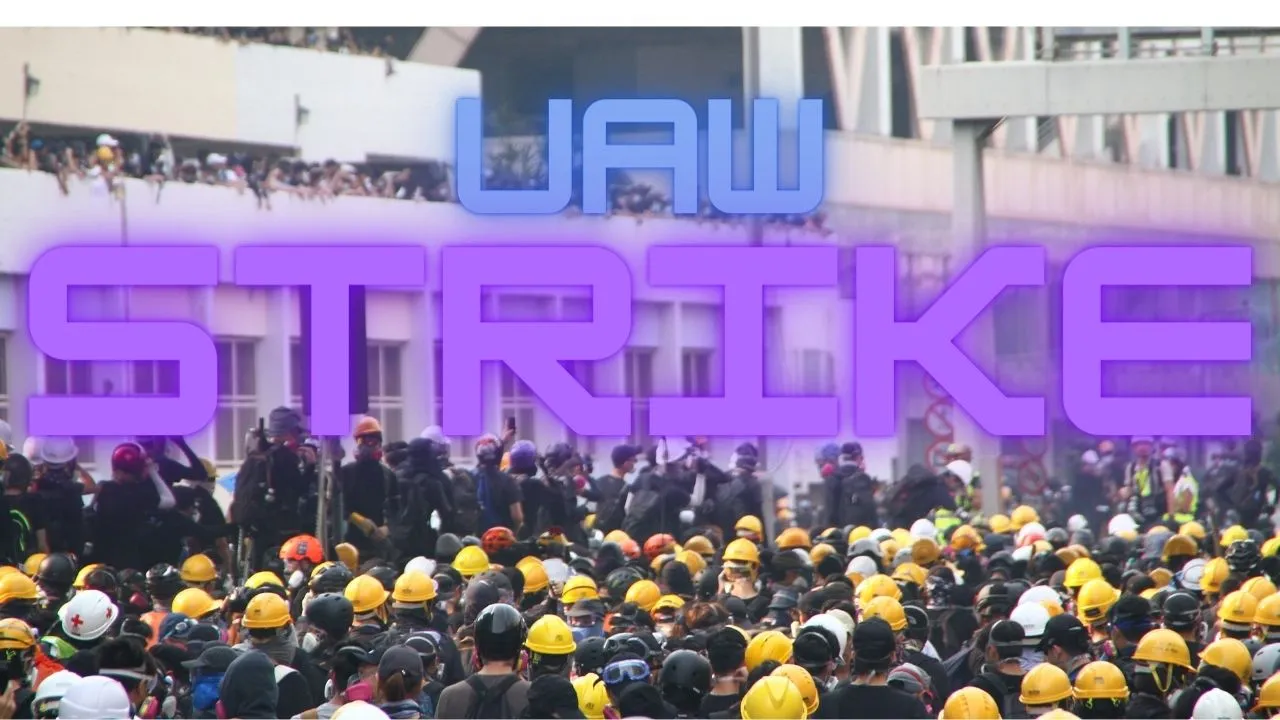The United Automobile Workers (UAW), one of the most prominent labor unions in the United States, is currently embroiled in a significant strike against the Big Three automakers: Ford, General Motors, and Stellantis (formerly Fiat Chrysler). This strike is not just a mere labor dispute; it represents a pivotal moment in the ongoing struggle for workers’ rights and economic stability in the auto industry.
A Historical Perspective
To truly understand the gravity of the UAW strike, we must first look back at history. The UAW has a rich history of advocating for the rights and welfare of autoworkers. It has been at the forefront of securing better wages, improved benefits, and job security for its members.
The last time the UAW simultaneously struck all three major automakers was back in 2007. That strike lasted just a couple of days, but this current strike is showing no signs of a quick resolution. The stakes are higher, and the issues at hand are more complex.

The Core Issues
At the heart of the UAW strike are several key issues that resonate deeply with autoworkers:
1. Wages
The UAW is demanding a substantial wage increase for its members. Autoworkers argue that they deserve a more equitable share of the profits generated by these automotive giants. With the cost of living steadily rising, they believe it’s time for a fair wage adjustment.
2. Benefits
Healthcare benefits have always been a significant concern for UAW members. The union seeks to improve and secure comprehensive healthcare coverage for its workers and their families.
3. Job Security
The fear of layoffs and factory closures looms large over autoworkers. The UAW is pushing the automakers to commit to investing in new plants and job opportunities within the United States. This is crucial for the long-term job security of UAW members.
The Automakers’ Response
While the automakers have expressed a willingness to negotiate, they’ve also made it clear that they cannot meet all of the union’s demands. They argue that the auto industry is facing various challenges, including supply chain disruptions and a global semiconductor shortage, which limit their ability to fulfill the UAW’s requests entirely.
Ripple Effects on the Auto Industry
The UAW strike is already having a profound impact on the auto industry. Several plants have ceased production, and the disruptions are expected to escalate in the coming weeks. If the strike continues, it could lead to supply chain bottlenecks, delayed deliveries, and potential layoffs for non-union workers in the industry.
The Toll on Workers
The strike is not without its hardships for UAW members. Many are facing financial strain as their incomes are put on hold during the strike. The UAW provides strike pay, but it’s a fraction of their regular wages. This situation has led some workers to face financial difficulties and uncertainty about their future.
The Uncertain Duration
One of the most pressing questions surrounding the UAW strike is its duration. The union leadership has made it clear that they are prepared to strike for as long as it takes to reach an agreement with the automakers. This determination could result in a protracted strike with far-reaching consequences.
Possible Outcomes
As the UAW strike unfolds, several possible outcomes are on the horizon:
1. Agreement: The best-case scenario would be a comprehensive agreement that satisfies both the UAW’s demands and the automakers’ constraints. This would bring an end to the strike and provide stability to the auto industry.
2. Prolonged Strike: If negotiations stall or the parties involved remain uncompromising, the strike could persist for an extended period. This would not only affect autoworkers but also disrupt the entire auto industry.
3. Economic Impact: The strike’s repercussions might extend beyond the auto sector, potentially impacting the broader economy. The auto industry plays a significant role in the GDP, and disruptions could contribute to a decline in economic growth.
A Turning Point for Labor?
It’s too early to definitively state whether the UAW strike will be a turning point for the labor movement in the United States. However, it undoubtedly signals a resolute stand by workers for their rights, fair treatment, and job security.
The UAW’s strike serves as a reminder that the labor movement remains strong and determined to advocate for its members. The ripple effect of this strike may influence other unions to assert themselves in similar ways.
In conclusion, the UAW strike is a pivotal event with far-reaching implications. It not only impacts autoworkers and the auto industry but also reflects the broader struggle for workers’ rights and economic stability. As negotiations continue, the world watches closely, waiting to see what resolution will emerge from this historic labor dispute.
ALSO READ: Justin Jefferson’s Impressive Rookie Season with the Minnesota Vikings

